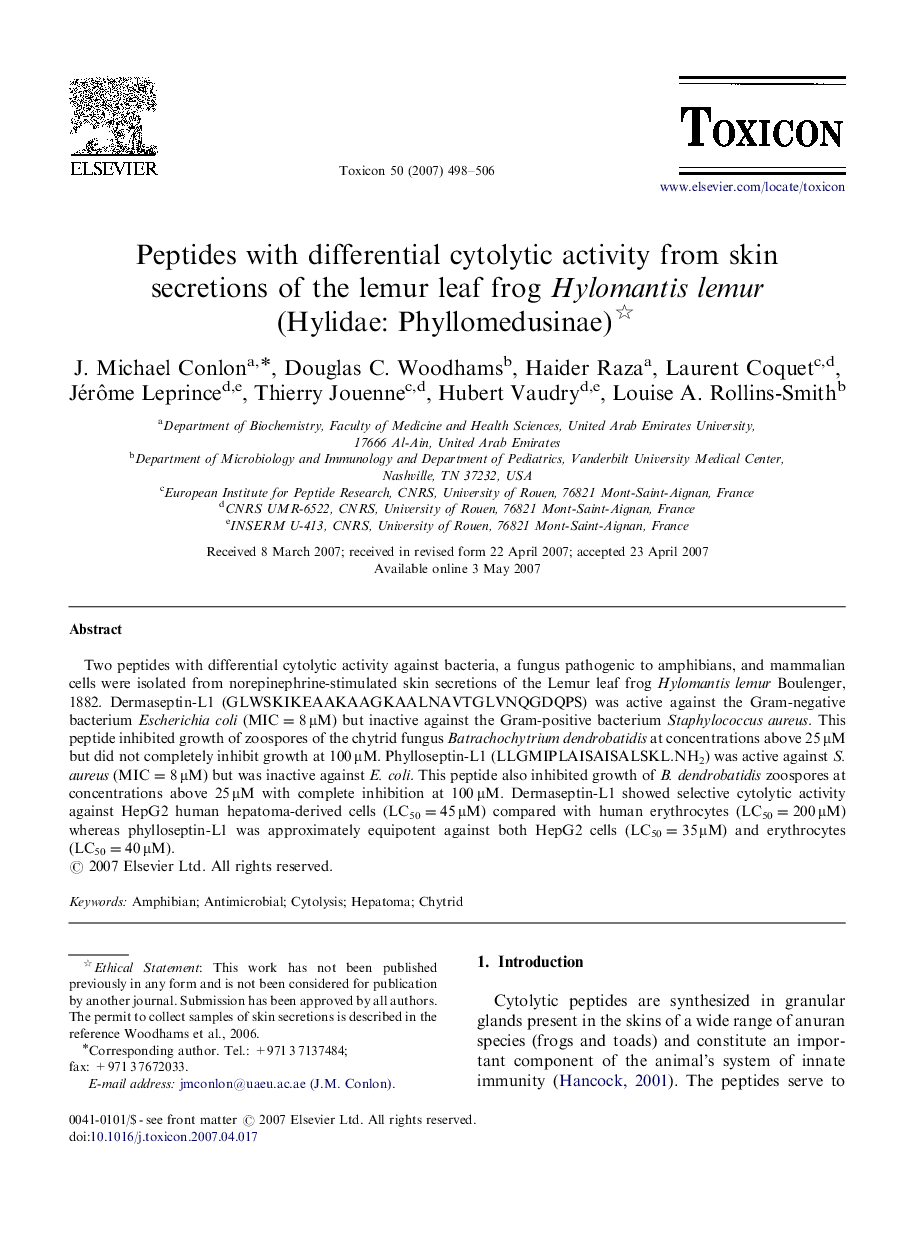| Article ID | Journal | Published Year | Pages | File Type |
|---|---|---|---|---|
| 2065291 | Toxicon | 2007 | 9 Pages |
Two peptides with differential cytolytic activity against bacteria, a fungus pathogenic to amphibians, and mammalian cells were isolated from norepinephrine-stimulated skin secretions of the Lemur leaf frog Hylomantis lemur Boulenger, 1882. Dermaseptin-L1 (GLWSKIKEAAKAAGKAALNAVTGLVNQGDQPS) was active against the Gram-negative bacterium Escherichia coli (MIC=8 μM) but inactive against the Gram-positive bacterium Staphylococcus aureus. This peptide inhibited growth of zoospores of the chytrid fungus Batrachochytrium dendrobatidis at concentrations above 25 μM but did not completely inhibit growth at 100 μM. Phylloseptin-L1 (LLGMIPLAISAISALSKL.NH2) was active against S. aureus (MIC=8 μM) but was inactive against E. coli. This peptide also inhibited growth of B. dendrobatidis zoospores at concentrations above 25 μM with complete inhibition at 100 μM. Dermaseptin-L1 showed selective cytolytic activity against HepG2 human hepatoma-derived cells (LC50=45 μM) compared with human erythrocytes (LC50=200 μM) whereas phylloseptin-L1 was approximately equipotent against both HepG2 cells (LC50=35 μM) and erythrocytes (LC50=40 μM).
